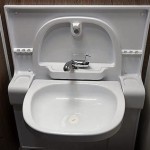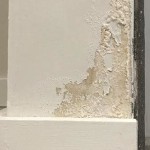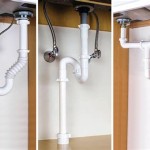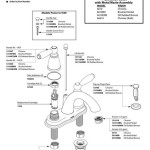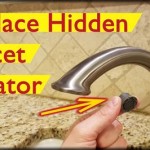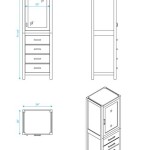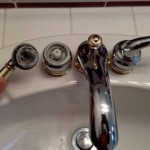Do Bathroom Spotlights Need To Be Fire Rated?
The question of whether bathroom spotlights require fire rating is a complex one, deeply intertwined with building regulations, safety standards, and the specific characteristics of the bathroom in question. A fire-rated spotlight is designed to prevent the rapid spread of fire through ceilings, maintaining the structural integrity of the building for a defined period, typically 30, 60, or 90 minutes. This allows occupants more time to escape and provides firefighters with a safer environment to operate in. Determining if fire-rated spotlights are necessary in a bathroom context involves a thorough understanding of the relevant regulations and a careful assessment of the bathroom's location and construction.
Building regulations dictate the circumstances under which fire-rated downlights, including spotlights, are mandatory. These regulations are primarily concerned with compartmentalization, the practice of dividing a building into fire-resistant zones to contain a fire and prevent its spread. If a bathroom is situated beneath a habitable room, such as a bedroom, living room, or another bathroom, fire-rated spotlights are highly likely to be required. This is because the ceiling of the bathroom effectively forms the floor of the room above and, as such, constitutes a fire barrier that must be protected. The installation of a non-fire-rated downlight can compromise this fire barrier, creating a pathway for fire to spread rapidly to the upper floor. Conversely, if the bathroom is located on the ground floor and does not have a habitable room directly above it, the need for fire-rated spotlights may be lessened, although other regulations concerning electrical safety and damp environments will still apply.
It is crucial to consult with a qualified electrician and building control officer to determine the specific requirements for any given bathroom project. Building regulations vary depending on the geographical location and may be subject to change. Therefore, relying on general advice or past experiences is not sufficient to ensure compliance and safety. Furthermore, even if fire-rated spotlights are not explicitly mandated by building regulations, their installation can still be a prudent measure to enhance fire safety, particularly in homes occupied by vulnerable individuals or those with limited mobility.
The types of ceilings also play a significant role in determining the need for fire-rated spotlights. Suspended ceilings, frequently employed in bathrooms for aesthetic appeal or to conceal pipework, present particular challenges. These ceilings typically consist of tiles or panels suspended from a framework, creating a void between the suspended ceiling and the structural ceiling above. This void can act as a conduit for fire and smoke, allowing them to spread rapidly throughout the building. As such, fire-rated spotlights are almost always required in bathrooms with suspended ceilings to maintain the fire resistance of the structural ceiling.
Even in bathrooms with solid ceilings, the construction of the ceiling itself can influence the need for fire-rated spotlights. Older buildings may have ceilings constructed from timber or lath and plaster, which may offer limited fire resistance. In such cases, the installation of fire-rated spotlights can significantly improve the overall fire safety of the building. Conversely, newer buildings may have ceilings constructed from fire-resistant materials, such as plasterboard, which may provide adequate fire protection even without fire-rated spotlights, although this should be verified by a qualified professional.
Understanding Fire Ratings and Their Significance
Fire ratings are expressed in terms of the time a product can withstand fire exposure while maintaining its integrity and functionality. Common fire ratings for spotlights are 30, 60, and 90 minutes. A 30-minute fire-rated spotlight is designed to prevent the spread of fire through a ceiling for at least 30 minutes, while a 60-minute fire-rated spotlight offers protection for 60 minutes, and so on. The appropriate fire rating for a particular application depends on the building regulations and the specific characteristics of the building. In general, buildings with multiple stories or complex layouts require higher fire ratings to allow sufficient time for evacuation and firefighting.
The fire rating of a spotlight is determined through rigorous testing conducted by accredited laboratories. These tests simulate real-world fire conditions, exposing the spotlight to intense heat and flames. The spotlight is assessed for its ability to resist flame penetration, maintain its structural integrity, and prevent the spread of smoke and hot gases. Spotlights that successfully pass these tests are certified as fire-rated and are labelled accordingly, indicating their fire rating and the standards to which they comply.
When selecting fire-rated spotlights, it is crucial to choose products that have been independently tested and certified by a reputable organization. This ensures that the spotlights meet the required fire safety standards and will perform as expected in the event of a fire. It is also important to verify that the fire rating of the spotlight is appropriate for the specific application. Installing a spotlight with an insufficient fire rating can compromise the fire safety of the building and potentially endanger lives.
Bathroom-Specific Considerations: Moisture and Electrical Safety
Bathrooms are inherently damp and humid environments, which presents unique challenges for electrical installations. In addition to fire safety, it is essential to consider moisture resistance and electrical safety when selecting spotlights for bathrooms. Water and electricity are a dangerous combination, and the risk of electric shock is significantly increased in damp environments. Therefore, spotlights installed in bathrooms must be specifically designed to withstand moisture and prevent water from entering the electrical components.
Ingress Protection (IP) ratings are used to indicate the level of protection a spotlight offers against the ingress of solid objects and liquids. An IP rating consists of two digits: the first digit indicates the level of protection against solid objects, while the second digit indicates the level of protection against liquids. For spotlights installed in bathrooms, an IP rating of at least IP44 is recommended. This indicates that the spotlight is protected against splashes of water from any direction. For spotlights installed in close proximity to a shower or bath, a higher IP rating, such as IP65, may be required.
In addition to IP ratings, it is also important to consider the electrical safety standards applicable to bathroom installations. Building regulations typically require the use of residual current devices (RCDs) in bathrooms to protect against electric shock. RCDs are designed to detect small imbalances in the electrical current and automatically disconnect the power supply, preventing a potentially fatal electric shock. All electrical work in bathrooms must be carried out by a qualified electrician who is familiar with the relevant regulations and standards.
Installation Practices and Long-Term Maintenance
Even the highest quality fire-rated spotlights will not provide adequate protection if they are not installed correctly. Proper installation is essential to ensure that the spotlights maintain their fire resistance and electrical safety. Fire-rated spotlights should always be installed by a qualified electrician who is familiar with the manufacturer's instructions and the relevant building regulations. The electrician should ensure that the spotlights are properly sealed to prevent the passage of fire and smoke and that all electrical connections are made correctly.
During installation, care should be taken to avoid damaging the fire-resistant properties of the ceiling. Cutting holes in the ceiling for the spotlights can weaken the fire barrier, so it is important to use the correct size hole saw and to avoid making unnecessarily large holes. Any gaps or cracks around the spotlights should be sealed with a fire-resistant sealant to prevent the passage of fire and smoke. The electrician should also ensure that the spotlights are properly supported and secured to the ceiling to prevent them from falling down in the event of a fire.
Regular maintenance is also important to ensure the long-term performance of fire-rated spotlights. The spotlights should be periodically inspected for signs of damage or corrosion, and any damaged or corroded spotlights should be replaced immediately. The electrical connections should also be checked to ensure that they are still secure and that there are no signs of loose wiring. By following these simple maintenance procedures, it is possible to ensure that fire-rated spotlights continue to provide reliable fire protection for many years.
Ultimately, determining whether bathroom spotlights need to be fire-rated requires a careful and considered approach. Factors such as the location of the bathroom within the building, the construction of the ceiling, and the relevant building regulations must all be taken into account. Consulting with a qualified electrician and building control officer is essential to ensure compliance with all applicable regulations and to ensure the safety of the building and its occupants.

What Are Fire Rated Downlights And Why They Important For Safety

Do Downlights Need To Be Fire Rated Simple Lighting Blog

Can Downlights Be Used In The Bathroom Elesi Blog

Most Energy Efficient Bathroom Downlights Arrow Electrical

Fire Rated Downlights Explained John Cullen Lighting

How Many Downlights In The Bathroom Elesi Blog

Bathroom Lighting Ideas Tips Downlights Co

What Are Fire Rated Downlights And Why They Important For Safety

4 X Non Fire Rated Ip65 Downlights In Chrome Value Lights

Premium Quality Bathroom Lighting Downlights Direct
Related Posts

